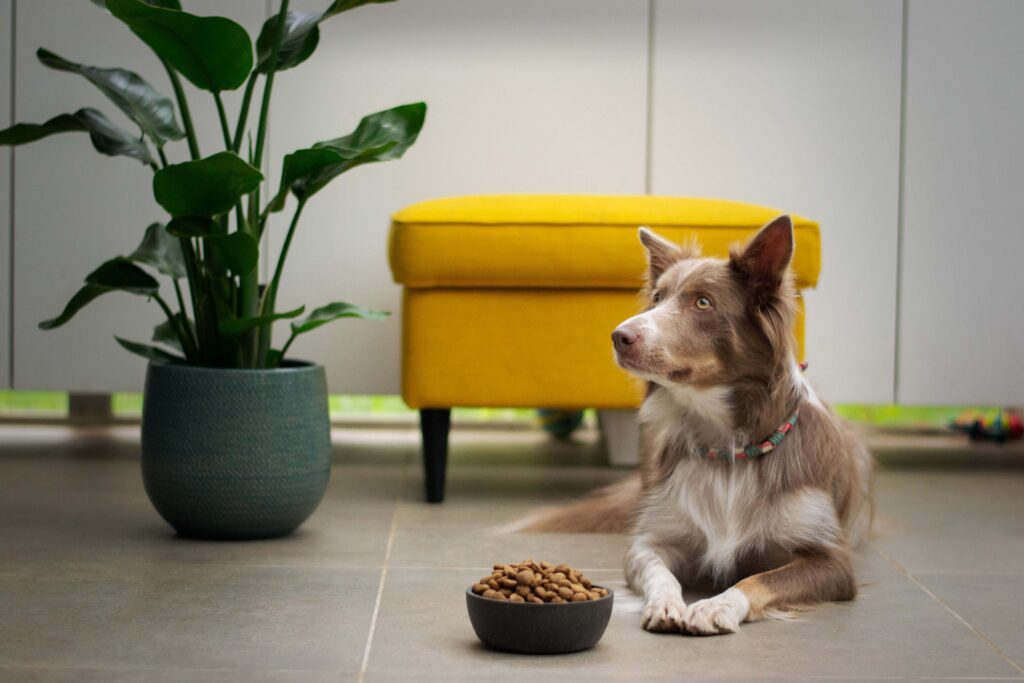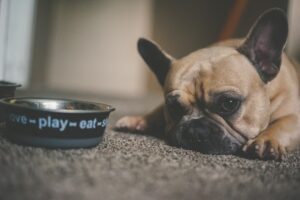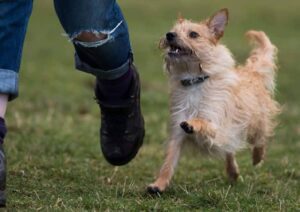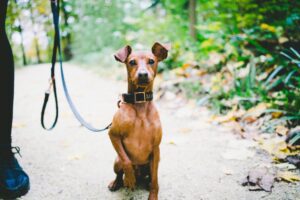Need help with Reactive Dog Behaviour? Join my FREE Facebook support group...
Why I hate snuffle mats and slow feeders at meal times…
More and more dog owners are turning to enrichment toys to feed their dogs their meals. But when used incorrectly, they may create a bigger problem than they solve. Here is why I hate snuffle mats and slow feeders at meal times!
Fight and flight vs rest and digest
When in fight or flight mode the body produces adrenaline. Adrenaline prepares the body to defend itself, hunt better, and run faster. This is quite intensive on bodily resources, so unnecessary processes are switched off to allow for peak performance. Two of these unnecessary processes are digestion and sleep. After all, no one is thinking about taking a nap in the middle of a fight!
Rest and digest mode is the opposite of fight or flight. This mode is designed to get the body back to normal so it can properly rest, recharge, and repair itself. So, digestion and sleep processes become available again, and fight mode gets switched off.
What does this have to do with slow feeders?
Slow feeders and snuffle mats are great enrichment activities as they present a challenge to the dog. This is great for encouraging natural behaviours, stimulation, and relieving boredom. But, to do this, they replicate the challenge of hunting and gathering, and for that, the dog must be in fight or flight mode.
In nature, the hunt ends when the food is won. Adrenaline drains away, and the body prepares to eat the food. Slow feeders force the dog to eat whilst they are still in hunting mode, and therefore still in fight or flight mode.
Imagine having to solve a series of puzzles to win bites of your own dinner tonight. You’d be stressed out, and you wouldn’t enjoy your food.
Many dogs will still eat while their body is in fight or flight mode, but not all. Just like us, that feeling of dread can really spoil your appetite. For dogs that do, their digestion isn’t at optimum efficiency and this can cause digestion problems. Food might sit in their stomach for longer, the dog can suffer absorption problems, indigestion, then when food is digested it can take longer, and it can also cause behaviour problems!

Eating in fight mode
It stands to reason that if you eat (or do anything for that matter) while the body is already prepared for a fight, it is much more likely to result in aggressive behaviour. With all that adrenaline surging, a dog is much more likely to be reactive to anything moving around him. His body is already prepared for a fight, so it won’t take much to trigger him to guard his food. In fact, some food aggression and frustration problems can instantly be eased just by ditching the enrichment toys at meal times.
Ironically, these type of toys could actually encourage fast eating too. Adrenaline will support the body to move and react faster. It is designed for a flight situation, but anything the dog is doing will be done faster when they are in fight or flight mode.
Some people advocate ditching meal times altogether and using a dogs food as rewards throughout the day, or via enrichment toys. But, never having a proper meal means the dog never feels that full tummy satisfaction. They will not feel like they’ve had a meal, and this could also contribute to the problem worsening.
Eating at the wrong time (biologically speaking) can indirectly cause behaviour problems too. Having indigestion all day, or absorption problems, could lead to reactive behaviour. It can then lead to a lack of sleep, which makes a dog grumpy, and can eventually can cause overwhelm – a major cause of reactive behaviour.
Why do dogs eat fast?
If your dog is a fast eater, and you’d like to slow them down, there are a few things to consider before resorting to slow feeders and snuffle mats. Firstly, dogs usually eat fast because they are worried about food competition, and potentially going hungry. This could be because there was a lot of competition in the litter, or from other pets. But, a busy or stressful environment, too few or skipped meals, past experience, and no predictable routine, can all create that feeling of competition and urgency. It’s also a good idea to get your dog checked by a vet to make sure there are no underlying issues that are making your dog feel extra hungry.
Earlier, I mentioned that many dogs will still eat whilst in fight or flight mode, I also mentioned that some don’t. This is important because they might actually be hungry, but that feeling of dread in the tummy is stopping them from eating at that time. Of course, once the dread feeling has gone they will likely want to eat again, but the food may not be available to them then. By the next meal time they will be extra hungry, and will naturally eat more frantically. This doesn’t mean you should leave food down. Quite the opposite, a routine is of feeding times is vitally important, just make sure they are ready to eat it when you do feed them.
What should you do instead?
So start by helping your dog feel more relaxed at meal times. This could mean changing the time so there are no kids running about, or finding a quiet place for your dog to eat alone. Some dogs like to eat in their crates, so experiment with that if your dog is crate trained. Providing a predictable feeding routine can calm uncertainty around food too.
Feeding after a walk is optimum as the body naturally enters rest and digest mode after exercise. Splitting the food over an extra meal can also help, as can temporarily increasing the portions. And, of course, definitely remove enrichment toys; meal times should be easy, relaxed, and restful. Save these toys for snacks and games between meals, they are perfect for that!
Beware of putting your hand in the food bowl too. Many people do this so their dog can get used to it. But any potential threat to the food could trigger fight or flight mode in your dog, which is the exact opposite of what you are trying to achieve with that move! Check out this video on hands in the food bowl and a better way to prevent food aggression.
If you still have a problem you could try scatter feeding, or using a few large bowls instead of just one. These will stop your dog taking huge mouthfuls but without making it challenging. They will stay in rest and digest mode, without overloading their tummy.
Are you struggling with your dogs behaviour?
Private Dog Behaviour Consultations are currently available in the Dundee area and beyond, or via zoom. If you are looking for help solving your dogs behaviour and training problems, then please get in touch!


